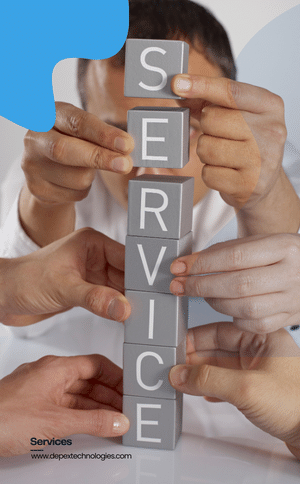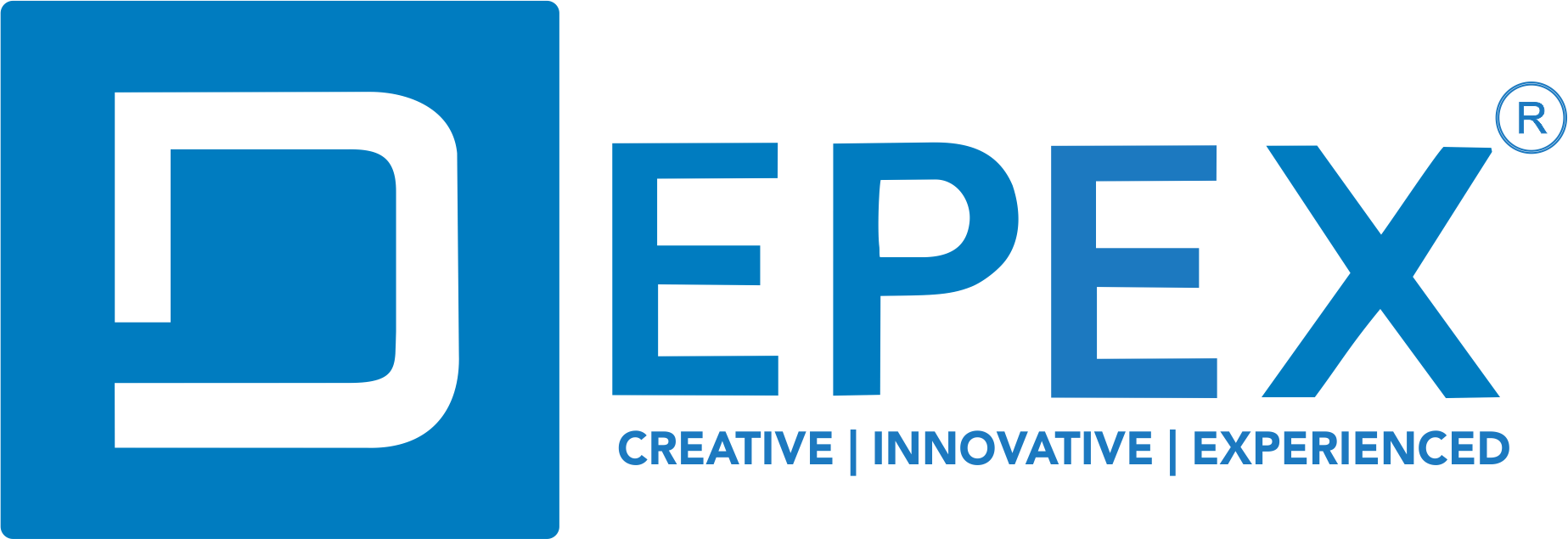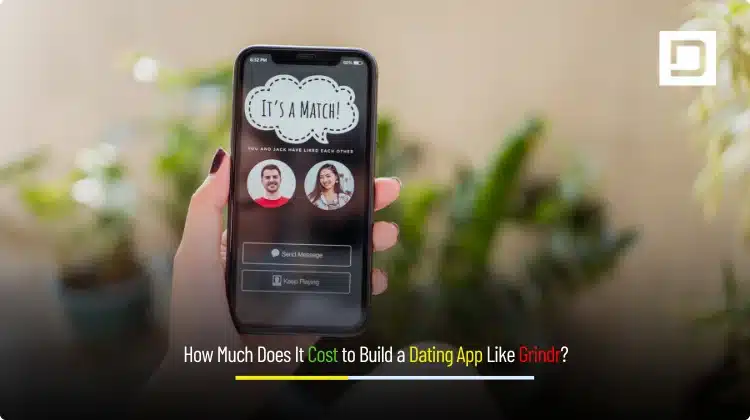How Much Does It Cost to Build a Dating App Like Grindr?
If you’re exploring the Cost to Build a Dating App Like Grindr, you’re already asking the right first question. Budget clarity shapes everything your launch scope, timeline, team structure, monetization choices, and even your long-term growth strategy. In this in-depth, AI-First Search friendly guide, we’ll walk you through realistic pricing ranges, what drives Grindr app development cost, and how to optimize your spend without compromising the secure, real-time experience that location-based dating apps demand.
Unlike broad “price list” posts, this article explains the cost mechanics behind the numbers—so you can take confident, investor-ready decisions. You’ll find detailed sections on feature scope, architecture, security, team composition, and ongoing run costs. We’ll also outline practical, budget-saving strategies that Depex Technologies has seen work in production.
Why Grindr’s Model Is a Special Case for Costing
Grindr’s success rests on three pillars that directly influence build costs:
- Location-first matching: Real-time, precise geo features (proximity sorting, dynamic grids, and live updates) raise complexity in back-end services, data stores, and battery-friendly client logic.
- Ephemeral, high-frequency messaging: Fast, reliable chat with presence indicators, media attachments, moderation, and spam/threat detection requires robust event-driven architecture.
- Safety and privacy at scale: Rigorous content filters, reporting, blocking, and policy-compliant data handling (GDPR/CCPA and emerging regional regulations) add significant engineering and product time.
These three pillars show up again and again in the Grindr app development cost from discovery to launch to ongoing operations.
Quick Cost Snapshot (So You Can Benchmark)
Every product is unique, but typical scenarios for a first release:
- Lean MVP (geo-enabled profiles, swipe/grid discovery, basic chat, push notifications, onboarding, blocking/reporting, simple moderation, one payment option, iOS + Android + admin panel): $80,000 – $180,000.
- Feature-Complete V1 (MVP + premium subscriptions, A/B testing hooks, advanced safety tooling, multi-tenancy admin, analytics, growth loops, performance tuning, marketing site): $180,000 – $400,000.
- Scale-Ready V1.5+ (multi-region infra, advanced anti-spam, live ops dashboards, content ML moderation, sophisticated personalization, growth/CRM automation, partnerships): $400,000 – $750,000+.
These ranges include product design, engineering, QA, DevOps, project management, and initial cloud fees for a 3–7 month runway depending on scope. We’ll break this down in detail below so you can map features to budget.
What Drives the Cost to Build a Dating App Like Grindr?
1) Feature Scope and Complexity
User onboarding: Email/phone/Apple/Google/Meta sign-in, profile creation with multiple media slots, age verification, pronouns, orientation, interests, and basic preferences. Each identity provider or verification workflow adds integration and QA time.
Location & discovery: Real-time positioning, nearby sorting, distance filtering, live grids, and background location strategies. To optimize battery usage and responsiveness, you’ll likely implement intelligent throttling and a publish/subscribe model. This is a key cost driver.
Messaging: One-to-one chat, typing indicators, presence, media/image moderation, read receipts, message retries on flaky networks, and incremental sync. If you add voice notes or ephemeral media, you’ll extend the pipeline, storage rules, and moderation layers.
Safety & moderation: Reporting flows, blocking, shadow banning, keyword and image checks, policy-based actions, country/region rules, and audit trails for admins. Building trust is non-negotiable, and this increases the Grindr app development cost in responsible ways.
Subscriptions & monetization: Free tier plus premium tiers (Boosts, unlimited likes, read receipts, ad-free, advanced filters, profile boosts). Implementing cross-platform in-app purchases (Apple, Google) and web payments adds complexity to entitlement logic and analytics.
Notifications & growth: Push notifications for new messages, people nearby, profile likes; email digests; deep links; referral codes; promo campaigns. Reliable event streams and campaign orchestration (with rate limits) need careful design.
Admin & analytics: Moderation consoles, user management, report queues, content review tools, fraud dashboards, cohort analysis, growth analytics, CRM hooks. A strong admin layer improves response times and reduces operational costs—but takes time to build right.
Internationalization: Multi-language support, right-to-left adjustments, local policies for age/consent, country-specific legal text, dynamic pricing by market.
The rule of thumb: each “simple” feature becomes several stories once you add data models, edge cases, analytics, testing, and compliance.
2) Platform Choices: Native vs Cross-Platform
- Native (Kotlin/Swift): Best performance for heavy location/messaging workloads, excellent OS-level access, and smooth animations. Higher initial cost because you build two codebases.
- Cross-platform (Flutter/React Native): Faster to market and single codebase for most UI. You might still write native modules for location, background services, or media encoding. This often reduces initial cost by 15–30% for MVP, with careful architecture.
3) Back-End Architecture and Real-Time Stack
Expect to combine:
- API gateway + microservices (or modular monolith for MVP)
- Datastores: A primary relational DB for accounts/subscriptions; a NoSQL or search engine (Elasticsearch/OpenSearch) for discovery; Redis for caching and presence; object storage (S3/GCS) for media.
- Messaging: WebSockets or MQTT for chat/presence; event buses like Kafka/Pub/Sub for analytics and notifications.
- Search & filters: Geo-indexing, dynamic ranking, and privacy-aware result shaping.
- Moderation: Queues, rules engine, optional ML models.
Design decisions here affect both build time and cloud costs.
4) Design System and Brand
Creating a sharp, inclusive brand with accessible UI/UX flows is not a line item to rush. Expect 3–8 weeks for a solid design system, prototypes, and usability testing. Design clarity speeds development and lowers rework.
5) Compliance, Privacy, and Security
- GDPR/CCPA readiness: Data mapping, DSR workflows, consent logs, retention policies.
- Age gating & content policies: Regional nuances (e.g., app store content rules, national regulations).
- Security: Secure auth, token rotation, encrypted media at rest/transit, device binding, WAF rules, rate limiting, bot detection, and periodic pen tests.
These add weeks—but protect your users and your brand.
6) Team Composition and Location
A typical delivery team:
- Product Manager + Tech Lead
- 2–4 Mobile Engineers (iOS/Android OR cross-platform)
- 1–2 Back-End Engineers
- 1 QA Engineer (plus automated testing)
- 1 UI/UX Designer
- 1 DevOps/Cloud Engineer (often fractional)
- Project Manager/Scrum Master (fractional)
Rates vary by region. Partnering with Depex Technologies blends senior oversight with cost-effective implementation through a global delivery model.
Detailed Cost Breakdown by Phase
Discovery & Product Strategy (2–4 weeks)
- Market positioning, key personas, jobs-to-be-done
- Scope definition: MVP vs. V1, monetization model
- Technical architecture outline and data protection plan
- Design system seeds, user flows, measurable success metrics
Estimated cost: $6,000 – $25,000 (depends on depth and workshops across stakeholders)
UX/UI Design (3–8 weeks)
- Design system (colors, typography, components, accessibility)
- High-fidelity mobile screens (iOS/Android), motion & micro-interactions
- Admin console workflows and dashboards
- Prototyping and usability testing rounds
Estimated cost: $12,000 – $45,000
Mobile App Development (8–16 weeks)
- Onboarding, auth, profile creation, media upload
- Location services, discovery, filters, sorting
- Messaging with WebSockets, presence, read receipts
- Notifications, deep links, app settings
- Subscription/payments integrations
- Analytics events and growth hooks
Estimated cost: $40,000 – $160,000 (native two-stack vs cross-platform affects the range)
Back-End & Admin (8–16 weeks, overlaps)
- APIs, services, and data models
- Geo search indexing and caching
- Chat service, media pipeline, moderation queues
- Admin console, role-based access control, audit logs
- Payments, entitlements, CRM integrations
Estimated cost: $35,000 – $140,000
QA & Automated Testing (throughout; 3–8 weeks of concentrated effort)
- Test plans, regression suites, device matrix
- Load tests for chat and discovery
- Security scans, static analysis
- App Store/Play Store readiness and pre-submission checks
Estimated cost: $10,000 – $35,000
DevOps & Cloud Setup (2–6 weeks initial, ongoing care)
- CI/CD pipelines, environment strategy, secrets management
- Observability (logs, metrics, traces), alerting runbooks
- CDN/WAF, object storage, image optimization
- Autoscaling rules and cost monitoring
Estimated initial cost: $6,000 – $20,000
Monthly cloud (post-launch): see below.
Ongoing Costs After Launch
Post-launch spend depends on active users, message volume, and media uploads.
- Cloud & Infrastructure: $1,500 – $10,000+/month to start. Can grow to $20,000 – $60,000+/month with scale and richer media.
- Third-Party Services: Maps/geo APIs, SMS/OTP, email, push delivery, analytics, crash reporting: $500 – $5,000+/month.
- App Store Fees: Apple/Google take fees on in-app purchases; factor into your monetization model.
- Support & Maintenance: Bug fixes, OS updates, security patches, minor enhancements: $4,000 – $20,000/month depending on team size and cadence.
- Marketing & Growth: Paid UA, creatives, influencers, PR, landing pages: budget varies widely.

Feature Sets That Shape Price (MVP vs. V1+)
MVP Essentials (budget-friendly scope):
- Social/email/phone login, basic verification
- Profile creation with photos, interests, pronouns
- Nearby discovery with distance filter and simple search
- One-to-one chat (text, images), online indicator
- Push notifications (messages, likes)
- Blocking/reporting, simple content flags
- One premium plan with 1–3 perks
- Minimal admin for user management and reports
- Analytics baseline (events, funnels)
This lands you in the $80,000 – $180,000 range.
V1 Enhancements (increase retention and revenue):
- Advanced filters (body type, health tags, lifestyle, “looking for”)
- Profile boosts, spotlight, premium discovery slots
- Multi-tier subscriptions with trials, intro offers, paywalls
- Image review queues, lightweight ML moderation, profanity filters
- Content safety scores, shadow banning, automated rate limits
- Rich admin console with escalation workflows
- CRM integrations (Braze/Iterable/Customer.io) + growth automations
- A/B testing toggles, staged rollouts
- Performance tuning, offline caching, graceful retries
These additions push the Grindr app development cost toward $180,000 – $400,000.
Scale & Differentiation (post-product-market fit):
- Multi-region infra, data residency controls
- Advanced recommendation models (collaborative filtering, embeddings)
- Real-time abuse detection (behavioral signals, graph features)
- Community features (in-app events, groups)
- Rich media: short video intros, ephemeral stories
- Trust & Safety ops dashboards, queue SLAs, quality scores
- Partner APIs, affiliate systems, marketplace logic
Scope here often exceeds $400,000 as you harden for growth.
Monetization Models and Their Cost Implications
- Subscriptions: Core for dating apps; demands robust entitlement logic and proration, upgrade/downgrade flows, receipt validation, and anti-fraud rules.
- Boosts/Spotlight: Microtransactions add revenue but increase event handling, inventory logic, and abuse prevention.
- Advertising: Requires an ad mediation layer, frequency caps, user privacy management, and creative testing—plus policies to protect user experience.
- A-la-carte features: Paywalls for advanced filters or “See Who Viewed Me” types of perks complicate entitlement checks across clients and server.
The richer your monetization, the more engineering you’ll allocate to accuracy, experiments, and fraud control.
Architecture Notes That Save Money Later
- Start modular, not micro-everything: A well-structured modular monolith can ship faster and evolve into services after validation.
- Event-driven from day one: Use a message bus for notifications and analytics. It decouples features and eases growth experiments.
- Abstract payments & identity: Keep providers pluggable to change or add options without major rewrites.
- Centralize moderation: Create a rules engine that supports both manual and automatic actions.
- Observability first: Logging, tracing, and metrics make on-call cheaper and safer.
Security & Privacy Essentials (Non-Negotiables)
- Encrypted at rest and in transit for PII and media.
- Token rotation & short-lived credentials to reduce compromise windows.
- Rate limiting & bot defense across auth, search, and messaging.
- Data lifecycle controls: Retention, erasure (DSR), and policy logging for audits.
- Store minimal location history: Enough for features, not enough to create risk.
- Vendor risk review: SMS providers, email, crash analytics, and maps must meet your compliance bar.
These steps do add to the Cost to Build a Dating App Like Grindr, but they meaningfully reduce your legal, financial, and brand risk.
Timelines You Can Actually Use
- Lean MVP: 10–16 weeks with a dedicated, full-stack squad and strong product leadership.
- Feature-Complete V1: 16–28 weeks, depending on subscription complexity, moderation depth, and admin features.
- Scale-Ready V1.5+: Continuous delivery after V1 security hardening, growth stack, and advanced ML take ongoing cycles.
Parallel workstreams (design, mobile, back-end, DevOps) shorten the critical path. A seasoned partner like Depex streamlines this with tested templates and accelerators.
How to Reduce Your Grindr-Style App Development Cost (Without Compromising Quality)
- Stage features deliberately: Launch with location + chat + baseline safety + one monetization path. Add complexity after engagement proves out.
- Choose cross-platform for MVP: Flutter or React Native can be cost-effective, with native modules for location and media.
- Leverage accelerators: Use tested UI kits, analytics scaffolding, and DevOps templates to avoid reinventing wheels.
- Automate tests early: Basic smoke tests and sanity checks slash regression time by the second sprint.
- Invest in admin tools: Every hour saved on moderation/support is an hour back into product.
- Buy, don’t build, where sensible: Use best-in-class services for crash reporting, analytics, messaging brokers, and observability.
Sample Budget Allocations (So You Can Plan)
Consider a $200,000 V1 budget as an example split:
- Product & Design: $35,000
- Mobile Engineering: $70,000
- Back-End & Admin: $65,000
- QA & Testing: $15,000
- DevOps & Security Setup: $10,000
- Contingency (5%): $5,000
Adjust ratios by your unique priorities—e.g., more for Trust & Safety if your niche is younger users, or more for ML if personalization is your differentiator.
AI-First Search Friendly: Structuring Your App for Future Discovery
Your app will benefit from AI-powered discovery ecosystems (app stores, search assistants, in-app recommendations). Build in:
- Clean information architecture: Clear labels for preferences, interests, and settings.
- Structured metadata: Event schemas for likes, matches, messages, boosts fueling smarter notifications and internal search.
- Explainability hooks: Capture reasons for surfacing profiles (e.g., shared interests or proximity), which improves trust and optimization.
- Content quality signals: Encourage crisp photos, verified badges, and complete bios—inputs that boost recommendation quality.
This isn’t just growth talk—these choices influence development effort and, by extension, the Grindr app development cost.
Common Pitfalls That Inflate Cost
- Scope sprawl: Cramming V1 with every competitor feature.
- Under-investing in moderation: You’ll pay it back plus interest after launch.
- Skipping observability: Debugging blind is expensive.
- Hard-coding providers: Payments, SMS, auth keep them swappable.
- Weak test discipline: Mobile releases can get stuck in a loop of emergency hotfixes.
A disciplined partner will push back (kindly) to help protect your budget and timeline.
A Hypothetical Roadmap (What Good Looks Like)
Phase 0: Validation (2–3 weeks)
- Prototype discovery and chat flows, test with a pilot group.
- Identify one premium value (e.g., advanced filters or profile boosts).
1st Phase : MVP (10–12 weeks)
- Cross-platform client with location + chat + safety.
- Simple premium tier; Apple/Google IAPs + web payments (Stripe).
- Basic admin tools, analytics, crash reporting, push notifications.
2nd Phase : V1 Growth (6–10 weeks)
- Advanced filters, improved onboarding conversion (image prompts, profile completeness nudges).
- Moderation console 2.0 with queues and resolution SLAs.
- CRM integration for lifecycle messaging; limited A/B testing.
3rd Phase : Post-V1 Scaling (ongoing)
- Multi-region infra; anti-abuse ML; better recommendation models.
- Monetization experiments (boost bundles, seasonal promos).
- Rich community features (events, groups) if aligned with your brand.
Each phase has crisp KPIs: activation, message sends, day-7 retention, premium trials, and support SLAs. KPIs determine where the next dollars go.
Frequently Asked Questions on Grindr-Style App Pricing
Is cross-platform good enough for a location-heavy app?
Yes for MVP, if you plan native modules for background location and media. We’ve delivered performant MVPs this way and gradually introduced native optimizations as usage grew.
How do subscriptions affect cost?
Entitlements, receipt validation, and upgrade/downgrade edge cases add 2–5 weeks across mobile and back-end. The ROI is strong, so it’s a worthwhile investment.
What’s the biggest hidden cost?
Trust & Safety at scale. Plan for moderation tooling, content pipelines, rate limits, and community management. This protects user experience and brand reputation.
Can we launch without an admin console?
Technically yes, but you’ll pay in manual overhead and delayed responses to abuse. Even a lean admin saves serious time and risk.
How long until App Store approval?
Assume 1–2 weeks buffer for first submissions and be prepared to address policy feedback (especially around content, payments, and privacy).
Indicative Line-Item Estimates (to Build a Dating App Like Grindr)
- Authentication & onboarding: $6,000 – $18,000
- Profiles & media (upload, crop, compress): $8,000 – $25,000
- Geo discovery (nearby, filters, ranking): $15,000 – $45,000
- Messaging (real-time, media, read receipts): $20,000 – $60,000
- Notifications (push, deep links): $5,000 – $12,000
- Payments & subscriptions: $10,000 – $30,000
- Safety & moderation (blocking, report flows, tools): $12,000 – $40,000
- Admin console (moderation + user mgmt): $12,000 – $40,000
- Analytics & experiments: $6,000 – $18,000
- DevOps & security setup: $6,000 – $20,000
- QA & automation: $8,000 – $25,000
These are not additive by default—many tasks run in parallel—but they help you see where investment goes and what levers exist if you need to optimize the Grindr app development cost.
What You Get When You Build with Depex Technologies
- End-to-end delivery: Discovery, UX/UI, engineering, QA, DevOps, and launch support under one roof.
- Proven accelerators: Template architectures for real-time apps, admin consoles, analytics scaffolding, and CI/CD pipelines.
- Security-first mindset: Practical, policy-ready guidance on privacy, data lifecycle, and secure media handling.
- Growth alignment: We build the hooks for experiments, referrals, and lifecycle messaging from day one.
- Transparent costing: We map every feature to an effort range, so you can prioritize with clarity.
The Bottom Line: What’s the Real Cost to Build a Dating App Like Grindr?
If you’re aiming for a credible launch with real-time chat, geo discovery, and baseline safety, plan $80,000 – $180,000 for a lean MVP. For a commercial-grade V1 with subscriptions, admin depth, stronger moderation, and analytics, expect $180,000 – $400,000. If you’re preparing for rapid growth, multi-region reliability, advanced ML, and sophisticated trust tooling, budget $400,000 – $750,000+.
Those aren’t random numbers—they arise from the concrete engineering and product problems that location-first, real-time dating products have to solve to win.
Conclusion: Ready to Build? Let’s Design It the Right Way Together
You came here to understand the Cost to Build a Dating App Like Grindr and now you’ve seen how feature scope, architecture, safety, and monetization shape that number. The good news: you don’t need to overpay or overbuild to start winning. You need a clear path, a staged roadmap, and a team that has done this before.

Depex Technologies can help you define the right MVP, ship a polished experience, and scale with confidence without wasting cycles or budget. If you’re serious about launching a Grindr-style app with real-time chat, geo discovery, and a smart monetization stack, let’s talk.
Contact Depex Technologies today to get a tailored estimate, a realistic timeline, and a launch plan built around your goals.






